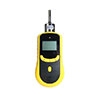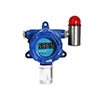A gas detector is an important piece of equipment that is widely used in industrial, commercial, and home security. With increasing industrialization and modern construction, the presence of gas leaks or toxic gases may pose a great threat to life and property. Gas monitors can help in detecting harmful gases in the air and ensure a safe working environment and home. However, there are various types of gas detectors available in the market, and the prices vary depending on the features, brand, detection range, and other factors. When choosing a gas detector, it is especially important to understand its price range and features, which not only helps to control costs but also allows you to choose the right device for your specific needs.
This article by Tool online store explores the price list of gas detectors and details the basic concepts of gas detectors, how they work, and their importance. By gaining a thorough understanding of this information, consumers can make more informed purchasing decisions and ensure that the gas detectors they choose perform optimally for applications in different environments.
Price List
| Product | SKU | Gas | Measuring Range | Price |
|
Portable Gas Monitor |
GD200-NH3 | Ammonia (NH3) | 0 to 20/200/1000 ppm | $828.16 |
| GD200-CO2 | Carbon Dioxide (CO2) | 0 to1000/10000/20000 ppm | $969.23 | |
| GD200-CO | Carbon Monoxide (CO) | 0 to 1000/2000/5000 ppm | $398.76 | |
| GD200-Cl2 | Chlorine (CL2) | 0 to 20/100/200 ppm | $846.15 | |
| GD200-H2 | Hydrogen (H2) | 0 to 2000/3000/5000 ppm | $784.62 | |
| GD200-HCN | Hydrogen Cyanide (HCN) | 0 to 10/50/100 ppm | $872.99 | |
| GD200-H2S | Hydrogen Sulfide (H2S) | 0 to 200/500/1000 ppm | $478.96 | |
| GD200-CH4 | Methane (CH4) | 0 to 50% VOL | $2,046.87 | |
| GD200-N2 | Nitrogen (N2) | 0 to 100% VoL | $891.38 | |
| GD200-NO2 | Nitrogen Dioxide (NO2) | 0 to 100/500/1000 ppm | $726.99 | |
| GD200-O2 | Oxygen (O2) | 0 to 30% VOL | $479.22 | |
| GD200-O3 | Ozone (O3) | 0 to 100/500/1000 ppm | $815.39 | |
|
Fixed Gas Monitor |
GD300-NH3 | Ammonia (NH3) | 0 to 200/500/1000 ppm | $754.13 |
| GD300-CO | Carbon Monoxide (CO) | 0 to 500/1000/2000 ppm | $486.77 | |
| GD300-CL2 | Chlorine (CL2) | 0 to 10/20/50/100 ppm | $585.59 | |
| GD300-EX | Combustible | 0 to 100%LEL | $525.67 | |
| GD300-H2 | Hydrogen (H2) | 0 to 2000/5000/9999 ppm | $634.77 | |
| GD300-HCN | Hydrogen Cyanide (HCN) | 0 to 10/50/100 ppm | $1,126.99 | |
| GD300-H2S | Hydrogen Sulfide (H2S) | 0 to 20/50/100/200 ppm | $486.77 | |
| GD300-CH4 | Methane (CH4) | 0 to 50% VOL | $2,093.23 | |
| GD300-N2 | Nitrogen (N2) | 0 to 100% VOL | $742.46 | |
| GD300-NO2 | Nitrogen Dioxide (NO2) | 0 to 20/50/100 ppm | $679.95 | |
| GD300-O2 | Oxygen (O2) | 0 to 25% VOL, 0-30% VOL | $434.77 | |
| GD300-O3 | Ozone (O3) | 0 to 1/20/100 ppm | $869.43 |
What is a Gas Monitor?
A gas detector is a device used to detect the concentration of specific gases in the air and is capable of detecting the presence of harmful gases such as carbon monoxide, methane, hydrogen, or hydrogen sulfide. Based on their functions and application scenarios, gas detectors can be categorized into two types: Portable and Fixed. Portable gas monitors are suitable for locations that need to be monitored anytime, anywhere, such as industrial sites or mines, while fixed gas detectors are mostly used in fixed locations that require continuous monitoring, such as factories, laboratories, or car parks.
In addition, gas detectors can be categorized according to the type of gas detected, such as combustible gas detectors, toxic gas detectors, and multi-gas detectors. Multi-gas detectors can detect multiple gases at the same time, making them ideal for scenarios with comprehensive detection needs.
How Gas Monitors Work?
Gas detectors detect gases through different sensor technologies. Common sensor types include electrochemical sensors, catalytic combustion sensors, infrared sensors, and semiconductor sensors. Here is how these sensors work:
- Electrochemical Sensors: Gas concentration is detected through a chemical reaction between the gas and an electrolyte, which produces a change in electrical current. These sensors are commonly used to detect toxic gases such as carbon monoxide or hydrogen.
- Catalytic Combustion Sensors: Calculate the gas concentration by burning the gas to generate heat and measuring the change in resistance. This type of sensor is mainly used to detect flammable gases such as methane and propane.
- Infrared Sensors: Utilise the property of gases to absorb infrared light at specific wavelengths and determine the gas concentration by measuring the absorption rate, usually used for detecting gases such as carbon dioxide.
- Semiconductor Sensor: Detects gas concentration by measuring the change in conductivity of the semiconductor material in the gas environment. The sensor is suitable for detecting toxic gases such as carbon monoxide.
According to the different application scenarios, you can choose the suitable type of gas detector sensor. For example, catalytic combustion sensors are more widely used in places containing combustible gases such as mines, while infrared sensors excel when detecting greenhouse gases.
The Importance of Gas Monitors
Gas monitors are of indispensable importance in a variety of environments, especially in industry, chemicals, mining, and home security, where gas leaks and the presence of harmful gases can have serious consequences. Here are the importance of gas detectors:
- Ensure Workplace Safety: In industrial and chemical sites, leakage of certain gases can lead to dangerous accidents such as fires or explosions. Gas detectors can detect leaks in time to avoid accidents and protect workers' lives.
- Prevention of Health Hazards: Long-term exposure to certain toxic gases (e.g. hydrogen sulfide or carbon monoxide) may cause serious damage to human health. Gas detectors can monitor air quality in real-time to ensure that gas concentrations in the working or living environment meet health standards.
- Ensure Home Safety: Gas appliances or ovens used in the home, for example, will be at risk of poisoning or explosion if the gas leaks. Installing a gas detector can effectively reduce the probability of accidents in the home and provide an extra layer of protection.
- Environmental Monitoring: Gas detectors can also be used to monitor the concentration of gases in the environment, especially in exhaust emission control and air quality monitoring. It helps to control pollution and reduce damage to the environment.
How to Choose a Suitable Gas Monitor?
When choosing a gas detector, you should consider the following key factors in addition to price. Determine the type of gas you need to detect, such as combustible gas, toxic gas, or multiple gases, and select the appropriate detector. Choose the right device according to the application environment, e.g. portable is suitable for on-the-go occasions, and fixed is suitable for long-term monitoring. Different sensors are suitable for different types of gases and environmental conditions, make sure the selected sensor matches the actual needs. Under the premise of meeting the basic functions, choose the right equipment according to the budget. Choosing products from well-known brands usually comes with better quality assurance and after-sales support.
Gas detectors are an important piece of equipment for ensuring safety in the workplace and at home. Whether it's to prevent industrial accidents, protect human health, or improve air quality, gas detectors play an important role. Tool Shop not only introduces the basics of gas detectors and how they work but also analyses the price ranges of different types of gas detectors to help consumers make a reasonable choice based on their actual needs. Understanding the price and features of a gas detector can help you make a more targeted purchase and ensure you get the right product for your needs. Whether for home use or industrial applications, choosing a reliable gas detector is a smart move.



